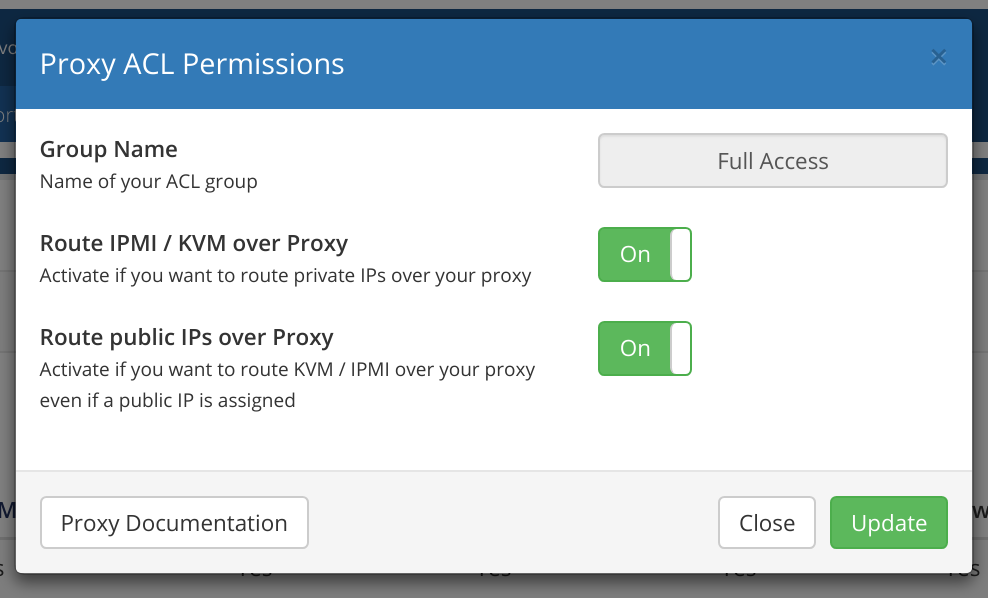If you are running IPMI and KVM behind private IPs, customers can access them only through a VPN or similar. With this feature, customers can access IPMI and KVM over the public Internet - directly from the client area - even though the services are located on the private network.
The security benefits of private IPs persist. Access is limited to the customer. The customer does not need to install additional software for access.
Overview
- Client can access KVM and IPMI via the clientarea
- ACL management can be used to define exactly which ACL groups should be routed via the proxy
- Public IPs can also get proxied (e.g. if you block access from unknown IPs, you can use this feature)
- Automated installation of proxy server
- Proxy is reachable over SSL. Automated Lets Encrypt SSL installation
- SSH: Password and key authentification supported for WHMCS ↔ Proxy communication
- WHMCS Admins get also routed over the proxy when clicking the IPMI or KVM link at the admin area product details page.
Your proxy server must be able to access the private IPs. You need to add an IP address from the private network to your proxy, and the proxy must be located in the same network as IPMI.
Private IP addresses can get added over the module. Once you add a new IP, the module automatically add the IP to your server.
You can also setup the private network manually on the server. The module will automatically detect all private IPs and display it on the module page.
The modul verified over the IP routes on the proxy server to check if access to the private network is possible. If you use a different method to access the private IPs (OSPF or similar) and you do not want to add private IPs to the proxy, you can disable the verification.
As a result, the module no longer checks accessibility based on the routes.
To enable this, add $proxy_ipcheck_ignore = 1; in the file "/modules/servers/dedicated/customconfig.php". If the file does not exist, you must first create it.
